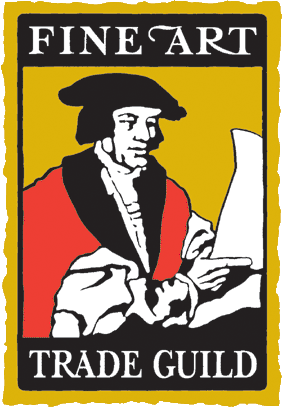Richard C O Lovesey
Fine Art & Print
FINE ART GICLÉE PRINTING FOR ARTISTS & PHOTOGRAPHERS
Giclée Printing - Image Capture
The Image Capturing Process
Scanning
High resolution image capture is paramount for quality Giclée prints and so it is recommended that your original artwork be made available for scanning, where possible, for the most accurate reproduction.

Colour Matching
Colour matching your Giclée prints is an essential stage in the process and necessary whether the original artwork is presented for scanning or a digital file is supplied. The process is achieved by producing a series of test prints with adjustments made between each until the best possible match is achieved. Even the best scans require colour matching to your original artwork, but the process is simplified with the original present. Colour matching a supplied digital file will usually require colour proof(s) to be created and examined by the client until a good match is achieved. The colour matching process requires skill and is time consuming and is charged separately from scanning as shown below:
Once your image has been obtained and colour matched, further prints can be produced on demand, at short notice from the saved digital ‘master’ and are charged at the unit rates shown here.
Already sold your original artwork?
As mentioned previously, it can be possible to produce Giclée prints from high quality digital files, however, if the original is available it should always be supplied for scanning to achieve the best results.
In cases where the original is unavailable, colour- matching obviously becomes extremely difficult to perfect and the supply of several colour proofs may be the only way to ensure a finish you are happy with. Please refer to the bottom of this page for details of colour proof prices, to which P&P will be added.
If you intend to supply digital files, please consider the following points…..
Resolution:
Image resolution is expressed as ‘dpi’ (dots per inch) for print or ‘ppi’ (pixels per inch) for screen images and refers to the number of dots on paper, or pixels on screen, used per inch to display an image. Unfortunately, whilst images look great on screen when displayed at 72ppi, this resolution is not high enough to obtain fine, crisp detail for print where a resolution of at least 300dpi is required.
Most digital and phone cameras capture and save images at 72ppi by default as they are primarily designed for viewing on a screen and this causes issues if you require such images to be printed. If your device has the ability to adjust it’s capture resolution, it should be set to 300dpi when you intend to print images.
File Type:
Another issue when printing from digital and phone camera images is the saved image file type which tends to be ‘jpeg’. A jpeg image file is a compressed file which is again designed for web and screen applications. The image is compressed, or made smaller, by the removal of important colour data and detail, whilst this does not alter screen appearance it is required for print. Files for print should ideally be ‘tiff’ files which are considerably larger in size. Remember, an image’s ‘file size’ does not refer to the image dimensions but to the amount of data that is contained within the file.
Supply:
When supplying image files, try to avoid using email or messenger services as images are often compressed when transmitted. You can upload images from your device directly to us via wetransfer.com
Click icon to download the information on these pages

